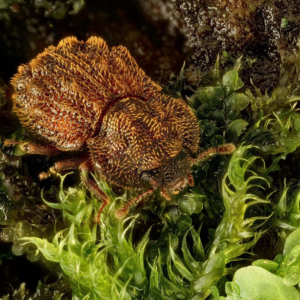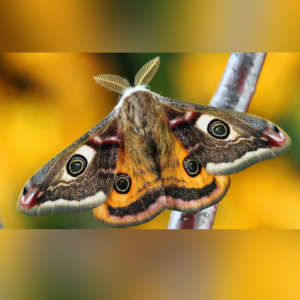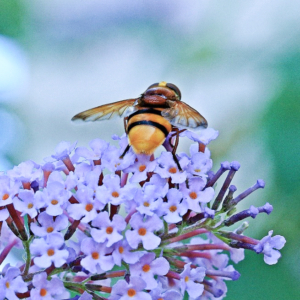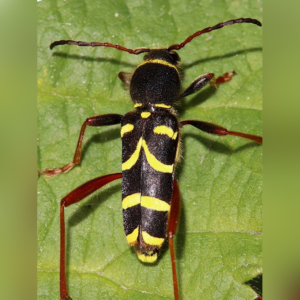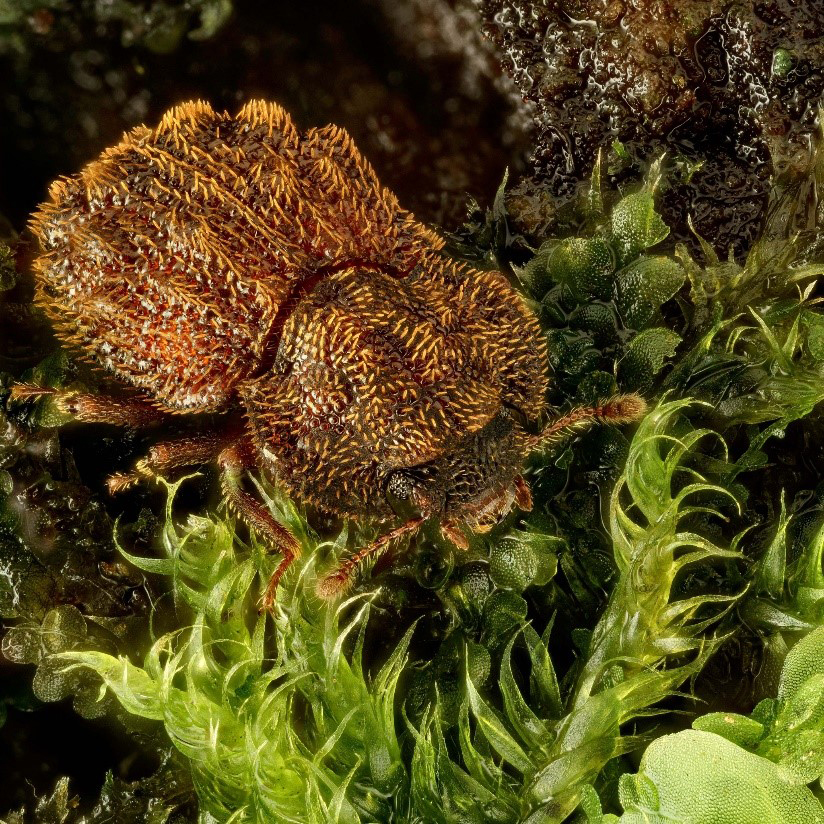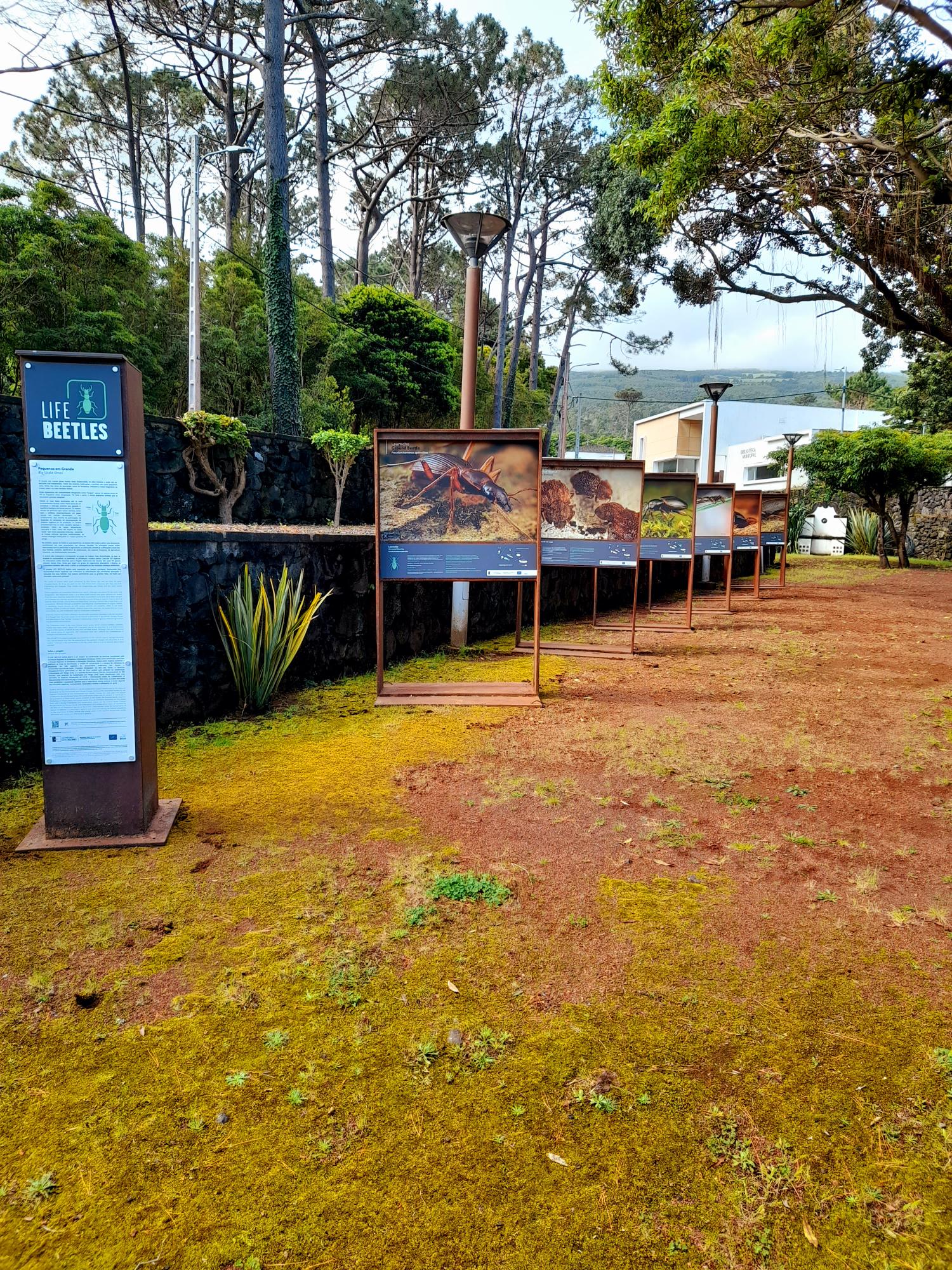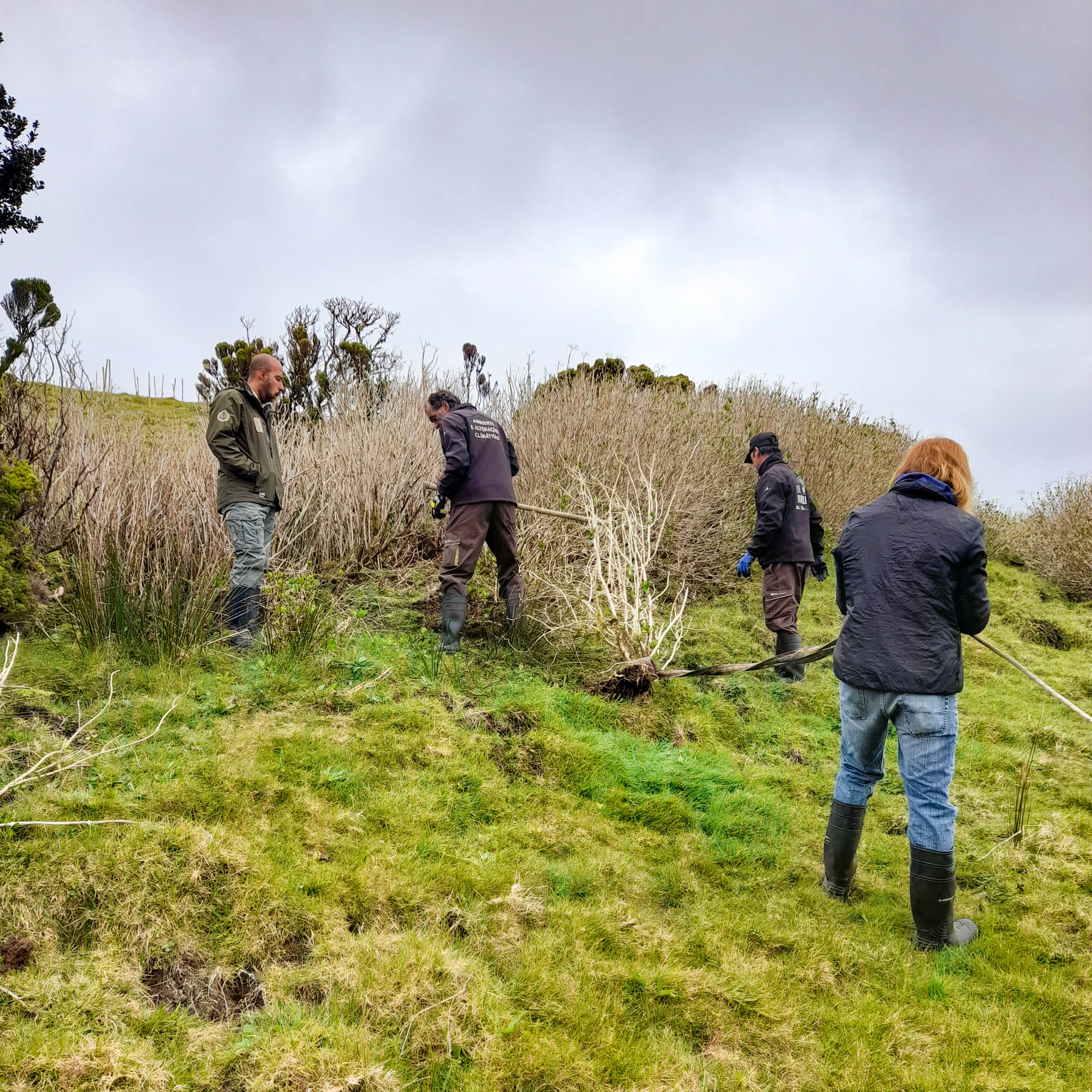Did you know that insects also have disguises?
Today the LIFE BEETLES, a project coordinated by the Regional Secretariat for the Environment and Climate Change, is going to unmask these disguised insects!
There are mainly two types of disguise in insects: camouflage and mimicry. The big difference between the two is that camouflage is used for the insect to blend in with the environment, and mimicry is when an insect has characteristics that make it look like another organism, animal or part of another animal.
An example of insect camouflage can be seen in our project’s target species. The Ironclad Beetle, a species endemic to the island of Flores, has a series of structures, called setae, on its carapace that attach pieces of leaves, fungi and lichens to its body, helping it to camouflage itself. In this way, it manages to escape its predators and is confused with its environment: the soil of Flores’ humid forests.
In the case of mimicry, it can have various purposes. For example, some insects use mimicry to confuse themselves with plants, such as the Walking Stick and the Leaf-mimic Katydid. Other insects, many of them beetles, mimic ants and manage to live in their colonies and “trick” them into feeding them. Some insects use mimicry to ward off predators by imitating other dangerous or poisonous animals. For example, butterflies sometimes have patterns that look like eyes, leading predators to think they are facing a much larger animal. Flies and beetles imitate bees and wasps, looking very dangerous to predators.
Whatever their purpose, insects have long since mastered the art of disguise, and only the most attentive eye can spot these masters.
Have you ever been fooled by one of them?
